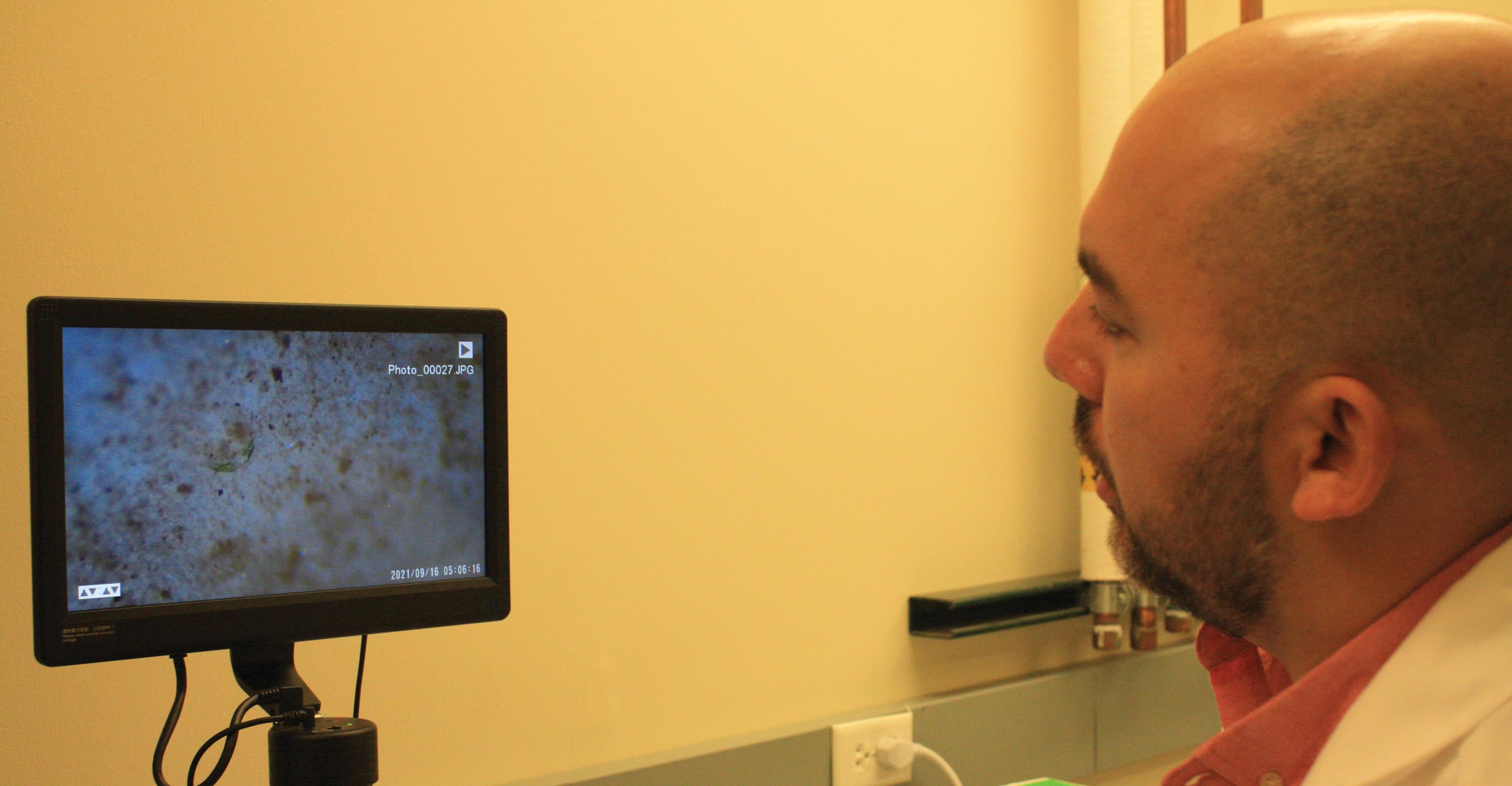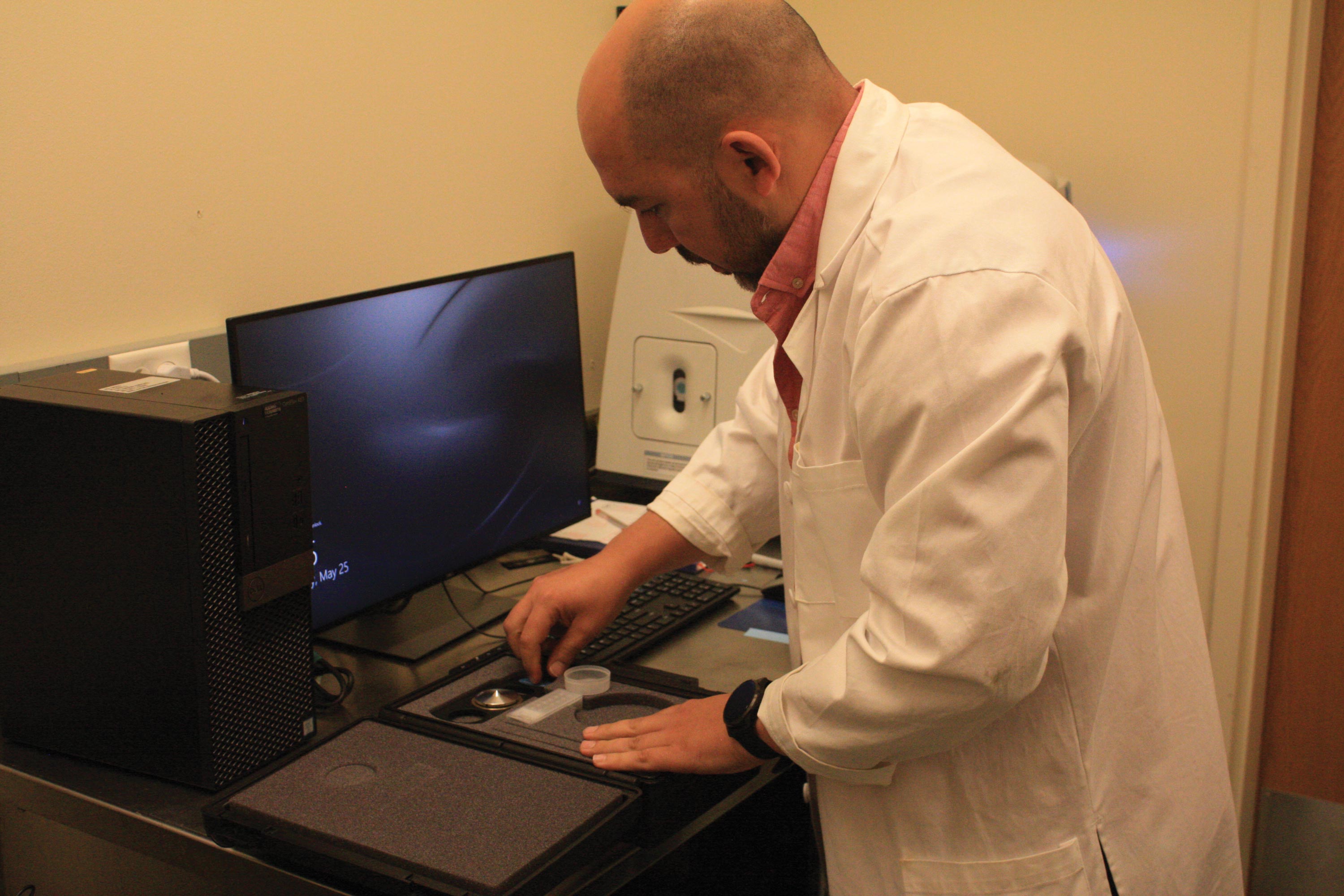
OSU researcher investigating impacts of microplastics
Monday, September 25, 2023
Media Contact: Kristi Wheeler | Manager, CEAT Marketing and Communications | 405-744-5831 | kristi.wheeler@okstate.edu
According to National Geographic, as of 2015, 6.3 billion tons of plastic waste had been generated. Around 9% of that was recycled, 12% was incinerated and 79% accumulated in landfills or the environment.
Dr. Jorge Gonzalez Estrella, an assistant professor in the School of Civil and Environmental Engineering at Oklahoma State University, leads a team of researchers that hopes to learn more about the fate of those plastic materials and the effect they may have on a variety of areas in the environment, particularly those that may be imperceptible to the naked eye.
“There is still a lot of unknowns concerning the effects of microplastics on the environment and living organisms in the environment,” Gonzalez Estrella said. “That’s what we’re trying to help with.”

Microplastics are defined as any plastic material between the sizes of 1 micrometer and 5 millimeters. These tiny bits of plastic are then broken into two categories, primary microplastics, which are designed as small bits of plastic and unchanged by environmental factors, such as beads from a piece of jewelry or small additives in cosmetics like facial scrubs. Secondary microplastics were once a part of a larger piece of material and have been broken or worn off by environmental forces, such as grinding or burning.
Gonzalez Estrella and his team in the College of Engineering, Architecture and Technology have recently been focused on the introduction, generation reactivity and fate of microplastics in open dumping and open burning waste management sites.
A large portion of the world does not have access to waste management services and must dispose of waste materials using methods that address the problem of waste volume, odor and subsequent pest populations. However, these methods often include open dumping and burning sites which may pose a long-term threat to the surrounding environment.
“These less regulated methods of waste disposal, while providing a temporary solution, also create a new, different problem that we are just beginning to understand,” Gonzalez Estrella said. “As these plastic materials are broken down, either by tearing and grinding or burning, they are now introduced into the surrounding environment in an altered state and are harder to detect and extract.”
The team of CEAT researchers are now focused on creating methods for the identification, extraction and investigation of microplastics in terrestrial environments. Methods used to accomplish these actions in aquatic environments cannot typically be used due to added variables and difficulties found in soil.
For instance, a simple density extraction method used in marine environments, where the plastic and sand would be separated using their differing densities, proves almost impossible in a terrestrial application due to varied materials found in soil and their varying densities in comparison to microplastics.
As such, the team has had to devise new methods for extraction, which they’ve been working on for the past two to three years and have found success. However, as extraction is only part of the investigation process, the team is now working on identifying and cataloguing microplastics to expedite future experiments. As for the effects these materials have, there is still little known concerning the impacts microplastics have on their surrounding environment.
Preliminary reports done by health organizations show levels of microplastic contaminants are not currently at a level that is concerning to the public. However, it is understood that there must be more research conducted to better understand these findings and the true impact of this material that has become ingrained in our culture.
“It’s unfair to ask the consumer to shoulder the burden, because a consumer doesn’t have a choice how a material is made. There’s only so much a consumer can do. So, I believe the bigger, more impactful decisions can be made by the manufacturers of these products.”
As research allows us to uncover and understand more about the effects that plastics and microplastics have on the environment, their impact is already noticeable.
“There is a lot of research done on the Anthropocene, or period of time during which human activities have impacted the environment enough to constitute a distinct geological change,” Gonzalez Estrella said. “If you were to look at a profile of the Earth, I believe that introduction of plastics could serve as a clear, identifying mark that humanity has had on its environment.”
Solutions to the growing problem of plastic waste continue to emerge. However, possibly the only true solution — the introduction of less plastic materials into the environment — is one that is not easily obtained nor widely received.
“It’s unfair to ask the consumer to shoulder the burden, because a consumer doesn’t have a choice how a material is made,” Gonzalez Estrella said. “There’s only so much a consumer can do. So, I believe the bigger, more impactful decisions can be made by the manufacturers of these products.”
From the introduction of the plastic era in 1907 by Dr. Leo Baekeland to the plastic boom brought about by World War II, this material has become a vital part of our culture, for better and worse.
“If you think about it from a product point of view, you create a product that is durable, that is flexible, that is resistant, that is cheap; that is great,” Gonzalez Estrella said. “From an environmental engineering perspective, you probably just produced the perfect contaminant; it’s durable, flexible, resistant and cheap.”
Photos: Jeff Hopper
Story by: Jeff Hopper | IMPACT Magazine
